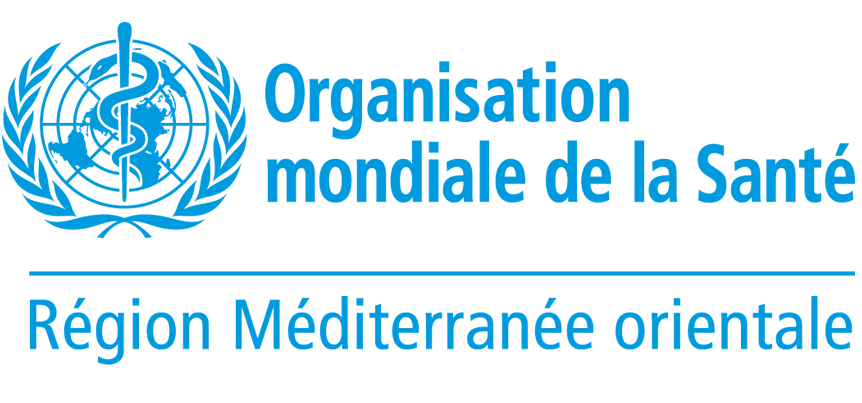“People saw the deadly impact of diseases with their own eyes, so they would come to get vaccinated”
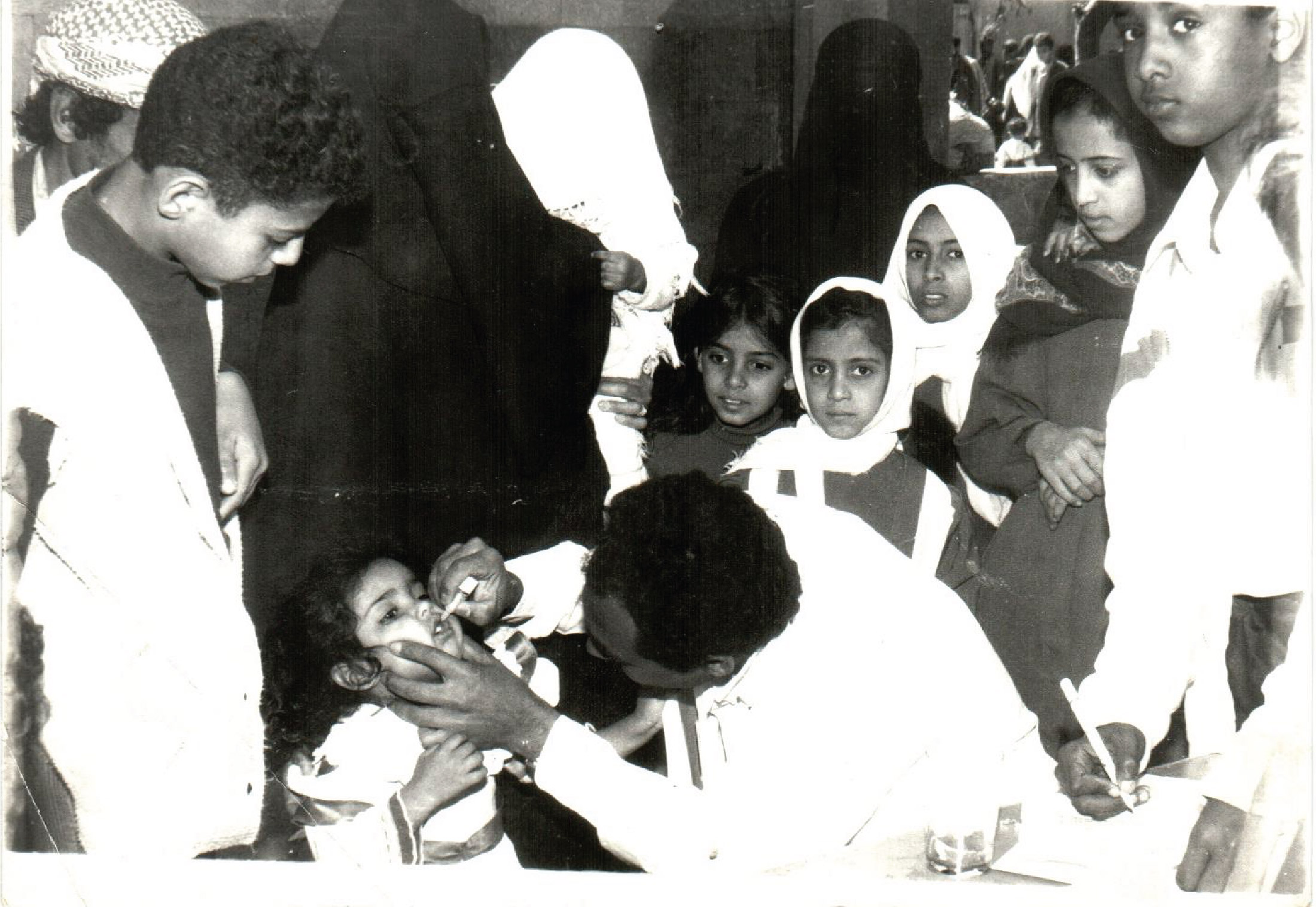 the Ministry of Public Health and Population25 April 2024 – Interview with Dr Mohammed Hajar, Advisor on Immunization to the Ministry of Public Health and Population, and one of the greatest minds behind the Essential Programme on Immunization (EPI) in Yemen.
the Ministry of Public Health and Population25 April 2024 – Interview with Dr Mohammed Hajar, Advisor on Immunization to the Ministry of Public Health and Population, and one of the greatest minds behind the Essential Programme on Immunization (EPI) in Yemen.
“I only came to this interview because EPI is one of my grandchildren.” These were the very first words uttered by Dr Mohamed Hajar, a man in his late seventies, as he entered the office for the interview.
“In Yemen, from 1970 to 1976, there was only the smallpox vaccine and field teams working to cover the governorates,” he went on. “But in 1977, the national Expanded Immunization Programme was established, and included basic vaccines, namely diphtheria, whooping cough, poliomyelitis, measles, tuberculosis, and tetanus for women. We started in only 3 governorates: Sana’a, Taiz and Hodeidah, because they had adequate roads and electricity.”
Before EPI, vaccinations were only provided through foreign teams such as the Peace Corps, Save the Children, a Norwegian group in Ibb governorate and a Swedish group in Taiz – all of which would provide people with vaccines without the administration of any national programme. But when EPI began, these international initiatives were introduced within its framework, and they were provided with EPI vaccines and associated forms. Immunization focal points under the supervision of the Ministry of Public Health and Population then followed up on coverage in each governorate.
Coverage was confined to these 3 governorates until the primary health care and immunization programmes were integrated in 1982. As a result, care units were expanded across Yemen’s governorates. Most units had a vaccination officer and a health worker, which increased immunization coverage. This also helped revitalize the primary health care programme, as demand for immunization was greater than for primary health care services.

Dr Hajar continued to recount the history of EPI: “In 2004, the second dose of the rubella vaccine was approved, while in 2005 the pentavalent vaccine [combined diphtheria-tetanus-pertussis vaccine, hepatitis B and Haemophilus influenzae vaccine] was introduced, having a significant impact in mitigating the incidence of these diseases. But one of the most important achievements was in 2009, when Yemen was declared free of the wild poliovirus. There has been no trace of the virus since 2006.”
Integrated efforts continued to strengthen the national EPI with new and improved vaccines, reducing the spread of the targeted viruses in Yemen. Vaccine preservation systems have also been strengthened, with cold chain systems a vital component. About 15 cold rooms, along with many refrigerators and coolers, have been added, and transport mechanisms enhanced at all subnational levels.
Manuals were developed and teams trained to help share knowledge and improve performance. All relevant documents were also provided, including records, children and women’s cards, and templates for daily and monthly reports from the subdistrict level to central level.
In the 1990s and early 2000s, polio immunization was carried out from fixed locations. In 2004, the strategy switched to house-to-house campaigns to ensure full coverage of all children aged under 5 years in all locations, including remote areas. This strategy continued until 2021, when the polio vaccine was confined to fixed sites in many areas in Yemen.
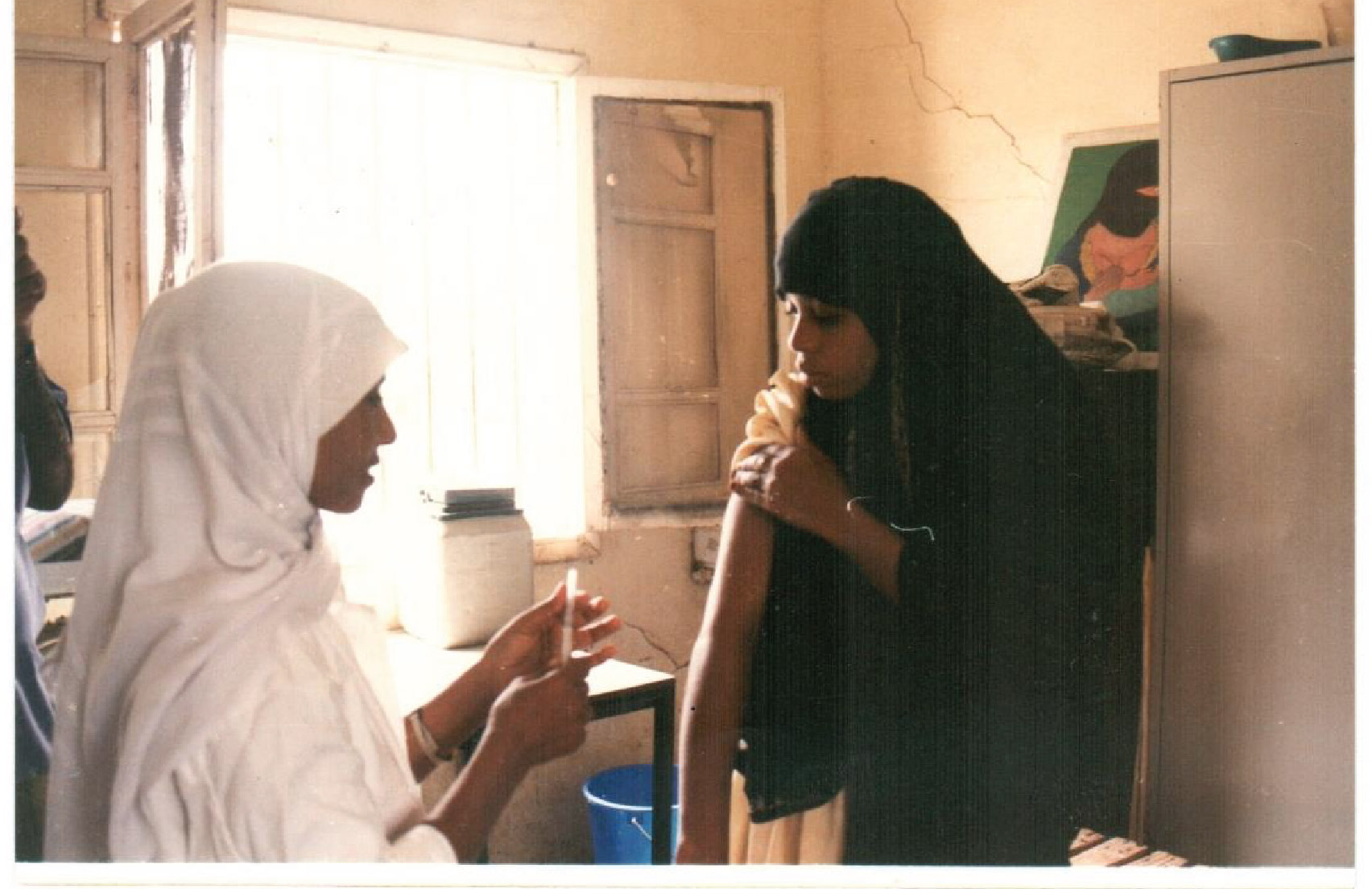
For decades, Yemen has promoted efforts that serve the health and well-being of its people, but the ongoing conflict has reversed all national gains and has paralysed development. Today, Yemen is witnessing the highest levels of health risks anywhere in the world, with a significant increase in the emergence of epidemics such as cholera, measles, diphtheria, dengue and polio. Public health infrastructure and services are limited, safe water sources are scarce, and vaccine hesitancy and refusal have increased.
“Previously, people saw the deadly impact of diseases with their own eyes, so they would come to get vaccinated,” explained Dr Hajar. “People had bitter experiences of smallpox, where those who were not vaccinated were either deformed or died; measles was when a child was either blinded or died, in most cases. When measles cases started, the uptake for vaccination was very high in all centres. People had an awareness of the importance of the vaccine and that it could save lives.”
He went on to share the situation now: “Yesterday I went to one of the fixed immunization sites. The workers were there to provide the vaccine, the vaccine is available, and all the means of recording and follow-up are available, but there are no families who are about to be vaccinated.”
Initially called the Expanded Programme on Immunization, this WHO initiative – which celebrates its 50th anniversary this week – is now known as the Essential Programme on Immunization. For about 47 years, Yemen has worked with WHO, various governments, local councils, international organizations and global initiatives to build its national EPI from nothing.
These partnerships continue to underpin Yemen’s immunization efforts to reach and protect children from vaccine-preventable deadly childhood diseases. And continuing these strong partnerships is the only way that Yemen can recover from the effects of conflict and protect the future of its children.
Strengthening preparedness at Yemen’s points of entry
 Participants of the point of entry training of trainers workshop in Aden, Yemen. Photo credit: WHO/WHO Yemen21 April 2024 – Yemen faces complex challenges made worse by 10 years of conflict. The deteriorating situation is coupled with a fragile health system, a lack of specialized staff, and a rise in health emergencies, some of which emerge from unexpected sources. Transport, travel and trade are linked to economic development but can also pose public health risks, causing diseases to spread across borders.
Participants of the point of entry training of trainers workshop in Aden, Yemen. Photo credit: WHO/WHO Yemen21 April 2024 – Yemen faces complex challenges made worse by 10 years of conflict. The deteriorating situation is coupled with a fragile health system, a lack of specialized staff, and a rise in health emergencies, some of which emerge from unexpected sources. Transport, travel and trade are linked to economic development but can also pose public health risks, causing diseases to spread across borders.
Points of entry ¬– airports, seaports, ground crossings ¬– pose unique health risks that require specialized capacities distinct from those needed in community and health facility settings. WHO works to enforce the International Health Regulations (IHR) at points of entry and build Yemen’s capacity to prepare for and respond to public health threats from unexpected sources.
Building capacities and pinpointing gaps
In December 2023, the WHO Country Office in Yemen gave a training of trainers workshop on IHR and its core capacities requirements for 14 key personnel from various sectors. These included points of entry staff; health inspectors from multiple airports, seaports and ground crossings; and personnel from national public health authorities.
The training enables participants to conduct national point of entry assessments effectively. The programme used a blended learning approach, combining theoretical sessions with practical field visits, letting participants gain valuable hands-on experience. Moreover, the training ended with a practical tabletop exercise designed to assess and reinforce essential public health functions at points of entry that align with IHR core capacities for prevention, early detection and response.
Standard operating procedures were devised to support the execution of routine activities and the response to international public health emergencies in line with IHR. A national training curriculum, stakeholder analysis, and guidelines on the purpose of IHR for workers at points of entry have also been developed.
 Point of entry assessment and visit to Seiyun Airport, Yemen. Photo credit: WHO, Yemen.The trained team, assisted by national and international experts, conducted national assessments at 10 strategic points of entry: 4 seaports, 3 airports and 3 ground crossings. The findings highlight strong multisectoral commitment and collaboration to fortify health infrastructure and capabilities. Yet they also reveal notable capacity gaps at points of entry premises and in information sharing across various levels.
Point of entry assessment and visit to Seiyun Airport, Yemen. Photo credit: WHO, Yemen.The trained team, assisted by national and international experts, conducted national assessments at 10 strategic points of entry: 4 seaports, 3 airports and 3 ground crossings. The findings highlight strong multisectoral commitment and collaboration to fortify health infrastructure and capabilities. Yet they also reveal notable capacity gaps at points of entry premises and in information sharing across various levels.
The assessments set the baseline for a comprehensive capacity-building plan based on immediate and long-term strategies. Pandemic Fund support will be used to address urgent needs, focusing on prioritized capacities in Yemen. It is vital, however, to sustain financial support and continuous capacity-building to maintain preparedness and response capabilities for public health threats at points of entry.
All hands on deck
Use of the capacity-building plan and the multisectoral assessments brings together stakeholders from human health, animal health, border control and other pivotal sectors. The aim is both to create a holistic understanding of capacities across various sectors, and to align strategies. This fosters a united front to effectively implement and sustain enhanced points of entry capacities that will ensure coordinated and comprehensive preparedness and response to public health threats.
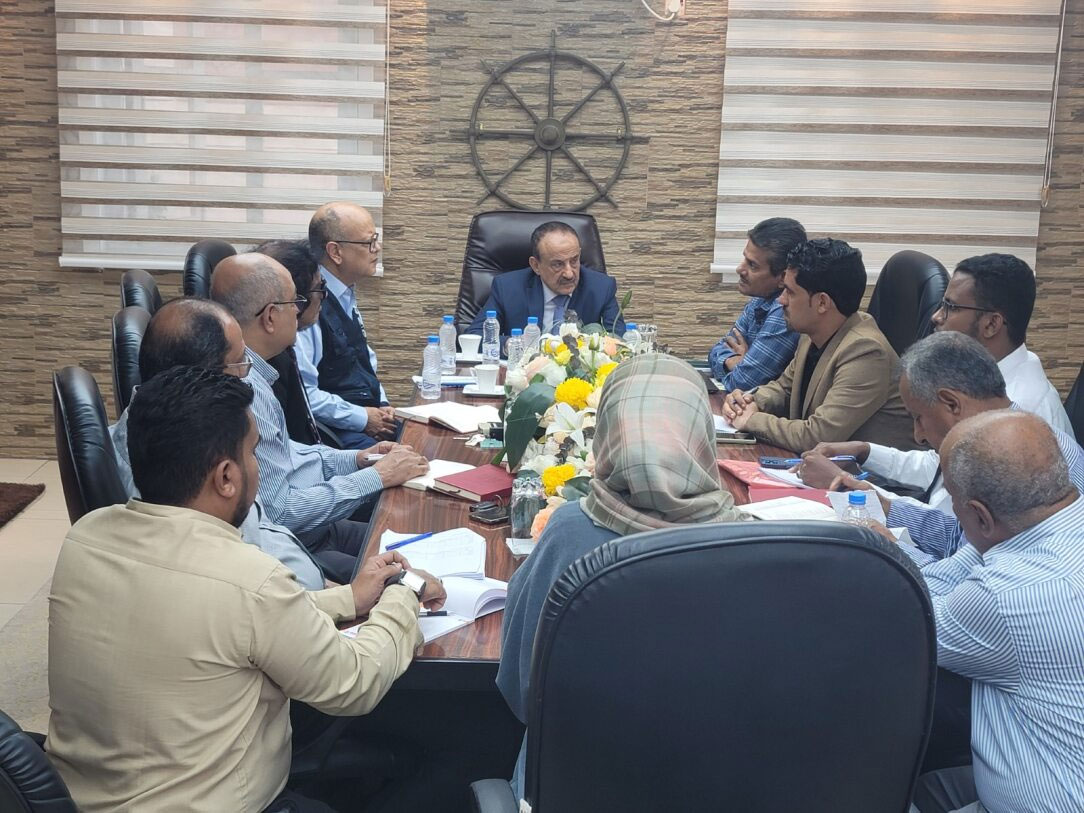 Multisectoral meeting at Aden Seaport, Yemen. Photo credit: WHO/WHO YemenThis WHO initiative to strengthen IHR core capacities at points of entry is crucial to enhance national, regional and global health security. Through unified efforts, Yemen is positioning itself at the forefront of health preparedness, showing its resilience and determination in the face of considerable challenges.
Multisectoral meeting at Aden Seaport, Yemen. Photo credit: WHO/WHO YemenThis WHO initiative to strengthen IHR core capacities at points of entry is crucial to enhance national, regional and global health security. Through unified efforts, Yemen is positioning itself at the forefront of health preparedness, showing its resilience and determination in the face of considerable challenges.
The success of this initiative hinges on the commitment of all involved parties. Collaboration is critical to prevent cross-border and international spread of disease and promote health security the world over.
The right to health: WHO works to bridge health divide in Yemen
 7 April 2024, Sana’a, Yemen – All people have the right to health. And no matter where they live, they should be able to access and afford quality health care when they need it. The prolonged conflict in Yemen has left half of the population in need of health aid .
7 April 2024, Sana’a, Yemen – All people have the right to health. And no matter where they live, they should be able to access and afford quality health care when they need it. The prolonged conflict in Yemen has left half of the population in need of health aid .
Vulnerable groups continue to bear the brunt of the crisis. Such groups include internally displaced people, children, women, elderly people, people with disabilities and mental health conditions, marginalized communities, and people affected by conflict-related injuries.
“The challenges that people in Yemen have to face cannot be described. Children who are referred to nutrition wards are only there because of prolonged starvation. The health system is fragile and faces difficulty in meeting the increasing demands,” said Dr Arturo Pesigan, WHO Representative in Yemen. “I feel for all the parents and caregivers who have to see their children getting ill in front of their eyes.”
Yemen faces a double burden of disease and armed conflict, and 17.8 million people in the country require health assistance. Of this number, 24% are women, who need access to diverse medical and reproductive health services. Children account for 50% of those in need, including 540 000 children aged under 5 years who require life-saving treatment for severe wasting – 10% of whom have severe acute malnutrition with medical complications and need highly specialized inpatient care. Inequalities are revealed in the high levels of malnutrition among mothers and children. Undernutrition remains a major public health crisis .
The multihazard risk profile for Yemen, the development of which WHO has supported, identifies 6 priority hazards with a high likelihood and potentially high public health impact: armed conflict, cholera, dengue, floods and cyclones, malaria and measles.
As the world marks the 76th World Health Day, WHO continues to support the health authorities to address the gaps, all the while working to strengthen the health system amid the conflict.
Through strong partnerships in 2023, WHO supported 245 health facilities to remain functional, providing 6.4 million outpatient consultations and reaching about 2.5 million people. Some 1.2 million children aged under 5 years were vaccinated against polio and another 1.1 million children (aged 6 months–4 years) were vaccinated against measles.
In addition, 4000 tonnes of medicines, equipment, medical furniture, information technology devices and other health technologies worth US$ 42.63 million in total were distributed to 470 health facilities across Yemen.
“Every number reflects a positive impact on people’s lives. These are men, women and children who were provided with life-saving services and were not turned away,” said Dr Pesigan. “A multisectoral approach is needed today to promote health and well-being while addressing determinants of health and risk factors. But if this is not combined with peace, true development may be difficult to achieve. Through peace, Yemen can start to heal.”
Media contacts
WHO Yemen Communications
Email:
About WHO
Since 1948, the World Health Organization (WHO) has been the United Nations agency dedicated to advancing health for all, so that everyone, everywhere can attain the highest level of health. WHO leads global efforts to expand universal health coverage, direct and coordinate the world’s responses to health emergencies and connect nations, partners and people to promote health, keep the world safe and serve the vulnerable.
Yemen launches a Pandemic Fund project to protect the most vulnerable communities from epidemic disease threats
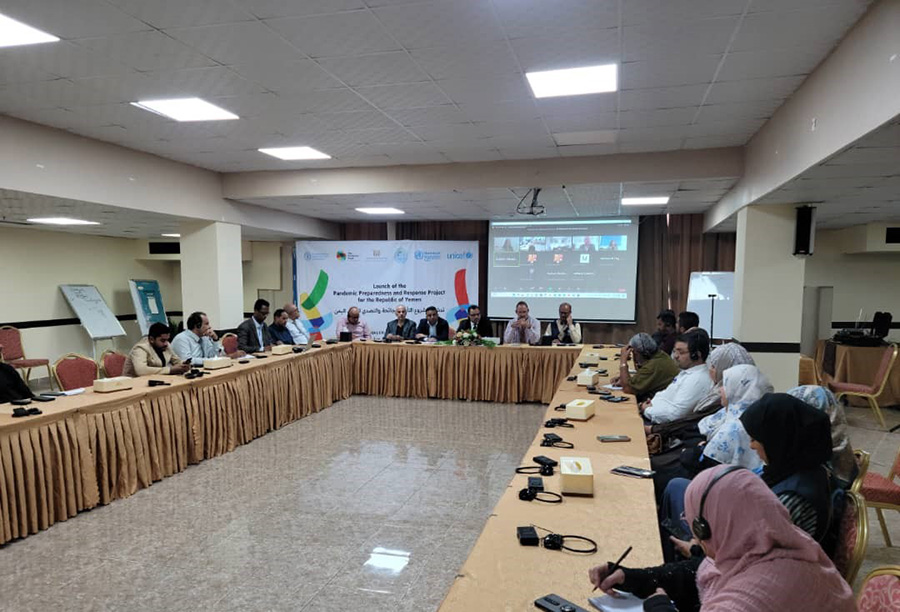 2 April 2024, Aden, Yemen – To better protect one of the most vulnerable populations in the world from pandemic threats, Yemen has today launched the Pandemic Preparedness and Response Project (PPRP).
2 April 2024, Aden, Yemen – To better protect one of the most vulnerable populations in the world from pandemic threats, Yemen has today launched the Pandemic Preparedness and Response Project (PPRP).
The virtual launch event was complemented by satellite in-person events in Aden, Republic of Yemen; Amman, Jordan; and Washington, D.C., United States of America. The event was attended by His Excellency Dr Qasem Buhaibeh, Minister of Public Health and Population; His Excellency Major General Salem Abdullah Al Soqatri, Minister of Agriculture, Irrigation and Fisheries; and Priya Basu, Executive Head of the Pandemic Fund Secretariat.
Also present were representatives of the PPRP implementing agencies: the World Health Organization (WHO), the United Nations Children’s Fund (UNICEF), the Food and Agriculture Organization of the United Nations (FAO) and the World Bank. Senior government officials, Health Cluster partners, and members of civil society and the public also joined the event.
The new PPRP will run for 3 years. Its goal is to protect and improve the health and well-being of Yemen’s people, livestock and ecosystems by strengthening the country’s ability to prevent, detect and rapidly respond to endemic and pandemic threats.
This goal will be achieved by pursuing the following 4 objectives:
Reinforce disease prevention, early warning, surveillance, detection and response capabilities through a One Health approach and at points of entry.
Improve health and veterinary laboratory capacities to confirm health threats and enhance biosafety and biosecurity.
Strengthen multisectoral workforce capacities from the community level up.
Enhance coordination, data sharing, communication and accountability among One Health stakeholders.
Delivery of these objectives will be supported by a US$ 26 million grant from the Pandemic Fund, and complementary action under other World Bank grants. These other grants include the Emergency Human Capital Project (2021–2024), implemented by UNICEF, WHO and UNOPS, with funding to date of US$ 448 million.
The Pandemic Fund grant also builds on the legacy of past successful investments that have strengthened outbreak preparedness and response, including the Yemen COVID-19 Response Project (2020–2022), implemented by WHO and the World Bank, and the Emergency Health and Nutrition Project (2017–2022), implemented by UNICEF and WHO with World Bank support.
Speaking at the launch, H.E. Dr Qasem Buhaibeh, Minister of Public Health and Population, reflected on Yemen’s commitment to improve pandemic preparedness and response: “Guided by WHO’s International Health Regulations, we are striving to raise our defences against persistent disease threats. This requires all-of-society action, and I hope everyone here today will join us in this effort.”
In recent years, building on lessons from the COVID-19 pandemic, Yemen has started to routinely deliver on the International Health Regulations (IHR) core capacities, such as IHR State Parties Self-Assessment Annual Report (SPAR). The country also conducted its first WHO joint external evaluation of IHR capacities in 2023 and is developing the first Yemen National Action Plan for Health Security, building on the findings and recommendations of these assessments.
H.E. Major General Salem Abdullah Al Soqatri, Minister of Agriculture, Irrigation and Fisheries, emphasized the importance of multisectoral collaboration: “We know a whole host of threats exist at the animal–human interface – using a One Health approach, with strong coordination at all levels, we can mitigate this risk and better protect ourselves and other countries.”
Dr Priya Basu, Executive Head of the Pandemic Fund, who joined virtually from the USA, said: "In partnership with the Government of Yemen, WHO, FAO, and UNICEF, the Pandemic Fund is proud to launch this innovative project aimed at fortifying Yemen against future major health threats. By enhancing digital surveillance capabilities and ensuring timely and effective response mechanisms are in place, alongside efforts to bolster laboratory systems and build a highly skilled health workforce, our project will significantly advance the country's pandemic preparedness and response capacities.”
WHO Representative to Yemen Dr Arturo Pesigan confirmed the need for broad-based action for pandemic preparedness and response, stating: “At WHO, we often say health systems strengthening is everybody’s business. I’d like to expand on this to say pandemic preparedness and response is everybody’s business.”
UNICEF Representative to Yemen Peter Hawkins stressed that "In a world still vulnerable to the impact of pandemics, our resilience will be measured by our ability to prepare diligently and respond swiftly. Every child must be protected from the threat of emerging diseases.”
PPRP is expected to make valuable contributions to Yemen’s preparedness and response capacities. Efforts will include, with WHO support, expanding and enhancing integrated disease surveillance and response. This will be done by leveraging and improving existing platforms such as the electronic Integrated Disease Early Warning System (eIDEWS) and rapid response teams positioned in each of the country’s 333 districts. The support will also help to sustain Yemen’s 12 central public health laboratories and enhance sample transportation systems.
FAO will support action to enhance surveillance for zoonotic diseases and agricultural laboratories and UNICEF will enhance community-based surveillance across the country. This work will be done in collaboration with WHO and the health authorities. At every step of the way, civil society will be engaged – to mobilize communities for pandemic action, and to ensure project accountability for the delivery of effective results.
The launch served as a crucial moment to showcase Yemen’s commitment to – and the support of local and international partners for – pandemic preparedness and response, and to mobilize broad action to protect communities from pandemic threats.
So far, the project has set up routine coordination meetings as well as a One Health coordination platform, bringing together the Ministry of Public Health and Population, the Ministry of Agriculture, Irrigation and Fisheries, WHO, FAO and other key stakeholders. PPRP focal points have been assigned at each implementing agency and the relevant ministries. Granular technical plans are under development, along with a civil society network for pandemic action.
A joint coordination committee, made up of representatives of government entities and partner organizations, is also being set up. This will regularly review progress, discuss challenges, and provide guidance on the project’s overall strategic direction.
About the Pandemic Fund
The Pandemic Fund – a multistakeholder partnership – was developed by the World Bank, in close collaboration with the World Health Organization (WHO) and other partners. It was established as a Financial Intermediary Fund at the World Bank in September 2022, launched in November 2022 at the G20 meetings in Bali, Indonesia, and has come together to deliver financing at record speed. The Fund is an innovative addition to the international health financing toolkit, a first-of-its-kind multilateral platform dedicated to making investments in pandemic prevention and preparedness in low- and middle-income countries. It has the flexibility to work through a variety of institutions, complementing efforts, drawing in co-financing, and promoting coordination on the ground; most importantly, it incentivizes countries to prioritize this agenda and increase their own efforts. The Fund’s operating model involves collaboration with governments, WHO, other United Nations agencies, multilateral development banks, global health initiatives, the private sector, philanthropic institutions, and civil society.
